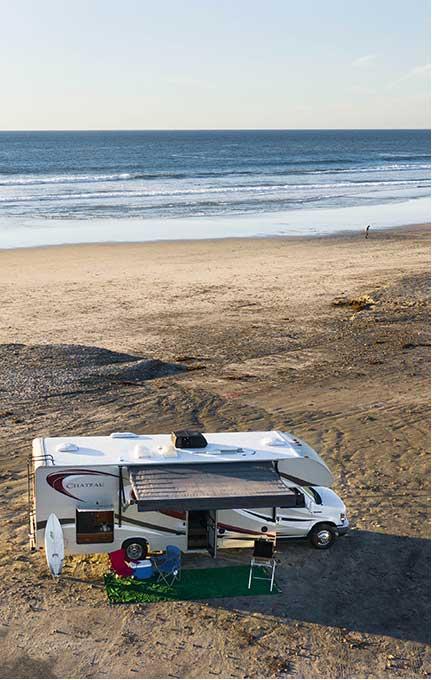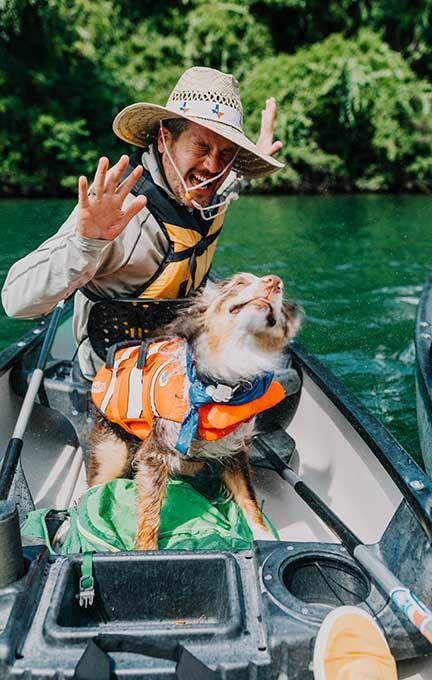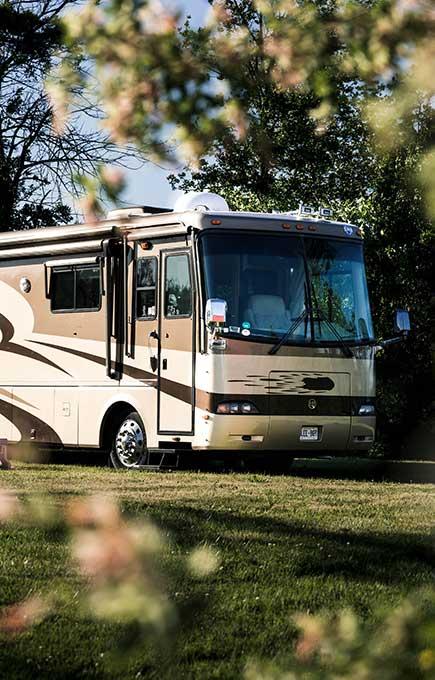Over the past year, pandemic-related shutdowns inspired Americans to head outdoors to find open, safe places to relax and exercise in record numbers.
In 2020, 7.1 million more people headed outdoors, and overall participation in outdoor recreation surpassed 52% for the first time on record, according to the Outdoor Industry Association (OIA). Among the most popular activities was fishing, which drew higher numbers of participants across multiple age, race, and gender groups.
The surge in outdoor participation undoubtedly provided a boost to the outdoor recreation industry that was already booming before the pandemic hit. In 2012, the industry contributed about $350 billion to the U.S. economy. Heading into 2020, that contribution jumped to more than $450 billion. And with consumers heading outside in record numbers over the past year, the industry’s contribution to the economy is likely to grow.
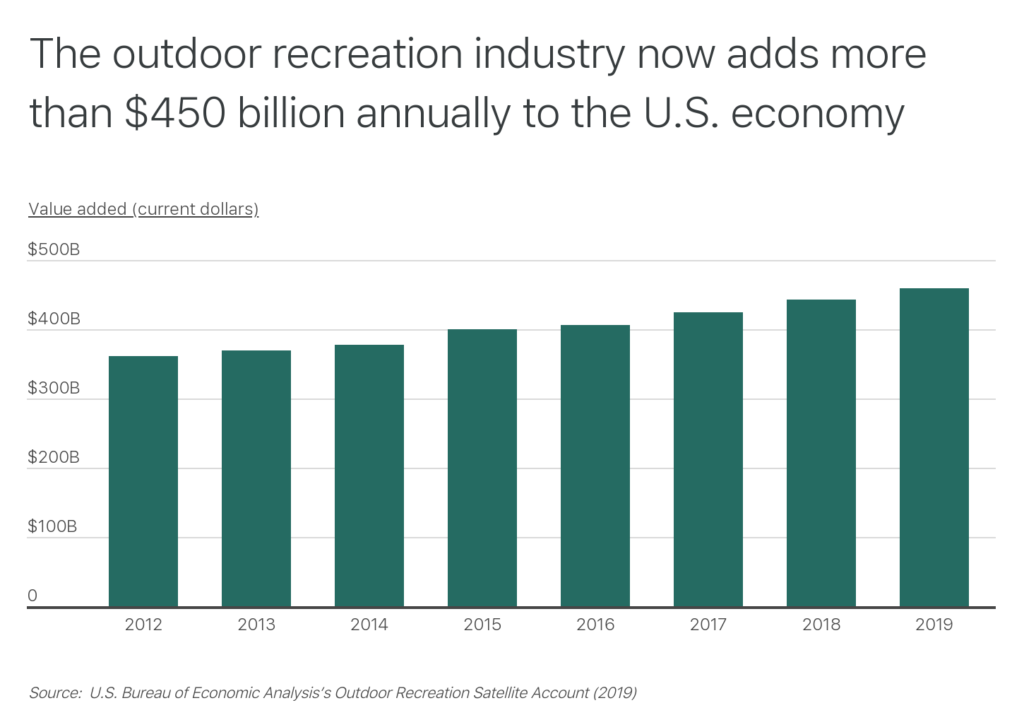
The U.S. Bureau of Economic Analysis categorizes “outdoor activities” into a broad spectrum of hobbies and exercises, including: boating and fishing; sports like golf and tennis; RVing; festivals, sporting events, and concerts; amusement and water parks; and snow activities like skiing and snowboarding.
Among these activities, boating and fishing adds the most value to the economy, accounting for a nearly $25 billion impact in 2019. That number is likely to go up, as boat sales increased by 13% in 2020. Those who fared well financially during the pandemic likely had the extra resources to purchase a boat, either fulfilling a lifelong dream or providing their family a new way to enjoy the outdoors.
For those on tighter budgets, fishing presented an economical option to enjoy the outdoors and time spent with friends and relatives. The number of first-time fishing participants jumped 42% in 2020, leading U.S. Fish and Wildlife Service Principal Deputy Director Martha Williams to tell OIA, “We are thrilled to see so many new and returning anglers enjoying our nation’s waters.”
Sports-based recreation and RVing were the second and third most impactful activities, according to Bureau of Economic Analysis data.
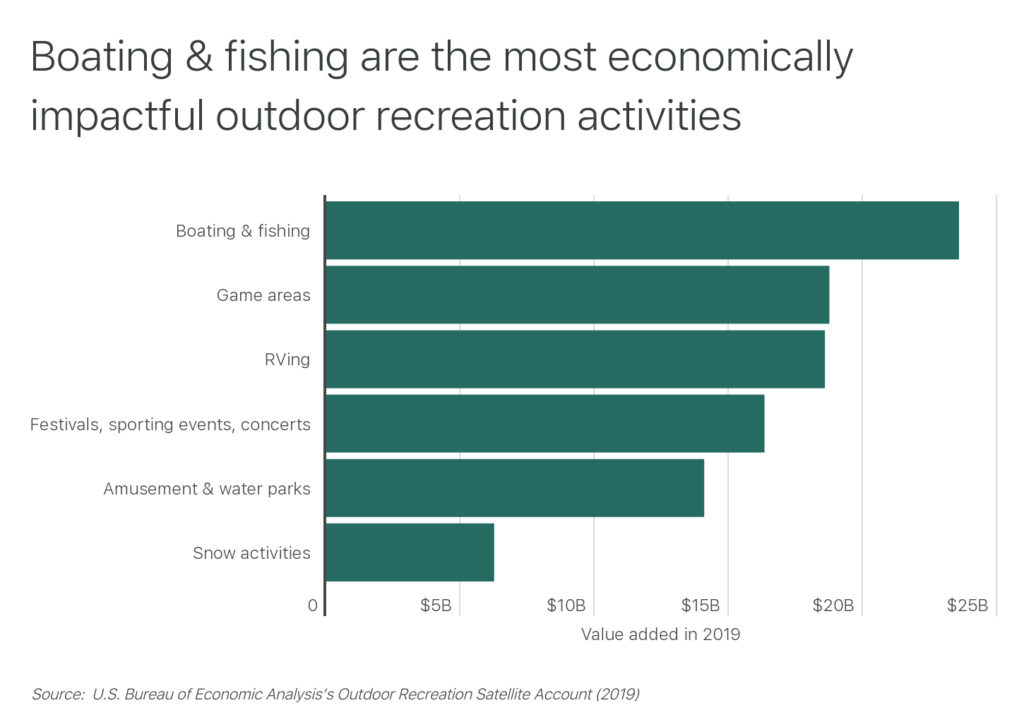
TRENDING
Outdoorsy has detailed guides on America’s national parks, including Rocky Mountain National Park in Colorado and Zion National Park in Utah.
The boost in outdoor participation seen across the country in 2020 was particularly beneficial to states dependent on outdoor recreation economically. To identify the states most dependent on outdoor recreation, researchers at Outdoorsy analyzed data from the Bureau of Economic Analysis and created a composite index based on the outdoor recreation industry’s share of GDP, employment, and compensation in each state.
Based on these factors, Outdoorsy identified a diverse set of states—both coastal and mountainous—that topped the list. Notably, Hawaii was the only state in which outdoor recreation made up at least 5% of its GDP, employment, and compensation. In the Mountain Region, Montana and Wyoming stood out as the two states most economically dependent on outdoor recreation.
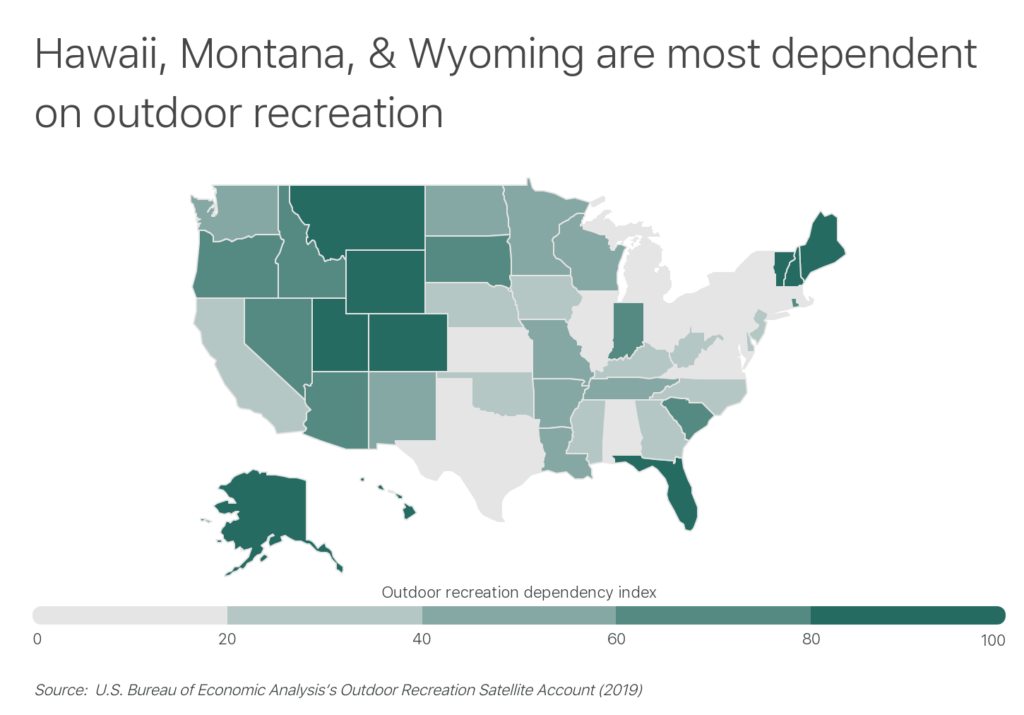
Here are the state economies most dependent on outdoor recreation.
U.S. States Most Dependent on Outdoor Recreation
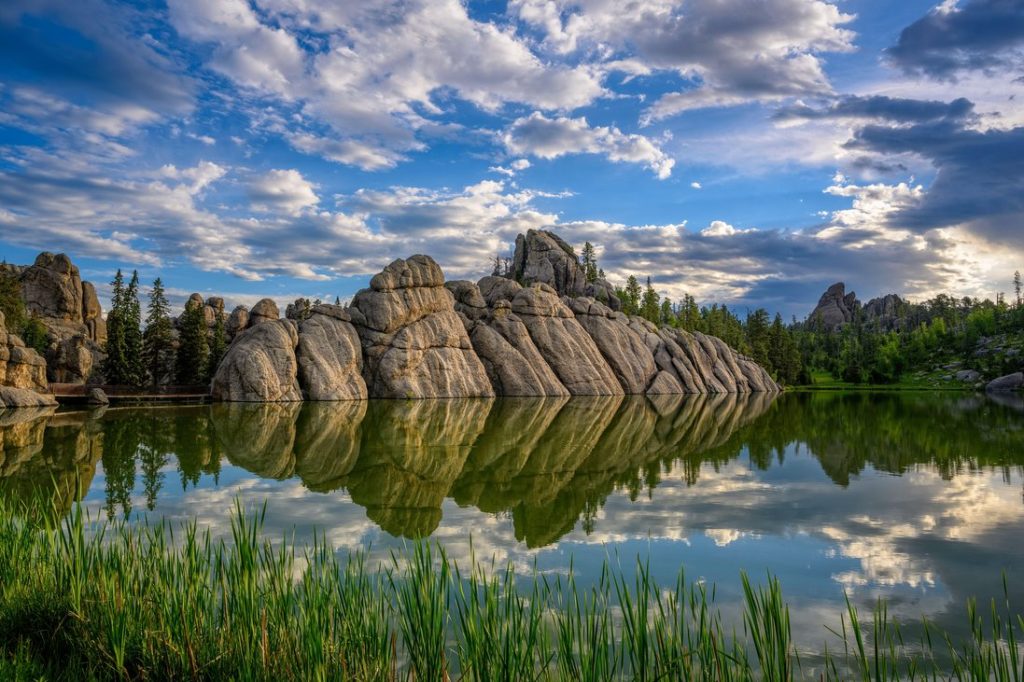
15. South Dakota
- Outdoor recreation dependency index: 69.6
- Outdoor recreation share of GDP: 2.5%
- Outdoor recreation share of employment: 3.3%
- Outdoor recreation share of total compensation: 2.5%
- Largest economic impact activity: RVing
RELATED
Looking for a perfect getaway? Washington’s Olympic Peninsula is home to many great wonders, including the beautiful Olympic National Park.

14. South Carolina
- Outdoor recreation dependency index: 74.6
- Outdoor recreation share of GDP: 2.9%
- Outdoor recreation share of employment: 3.5%
- Outdoor recreation share of total compensation: 2.5%
- Largest economic impact activity: Boating & Fishing
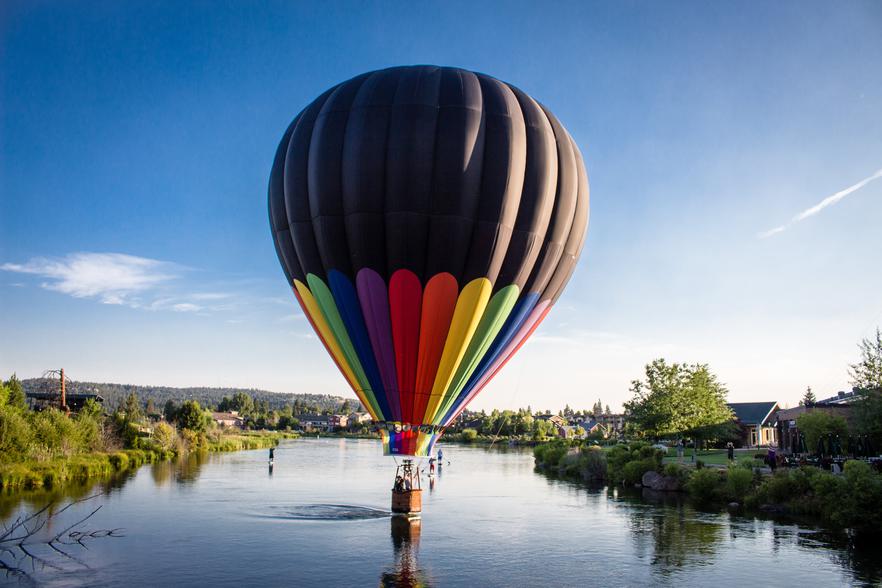
13. Oregon
- Outdoor recreation dependency index: 75.8
- Outdoor recreation share of GDP: 2.9%
- Outdoor recreation share of employment: 3.4%
- Outdoor recreation share of total compensation: 2.8%
- Largest economic impact activity: RVing
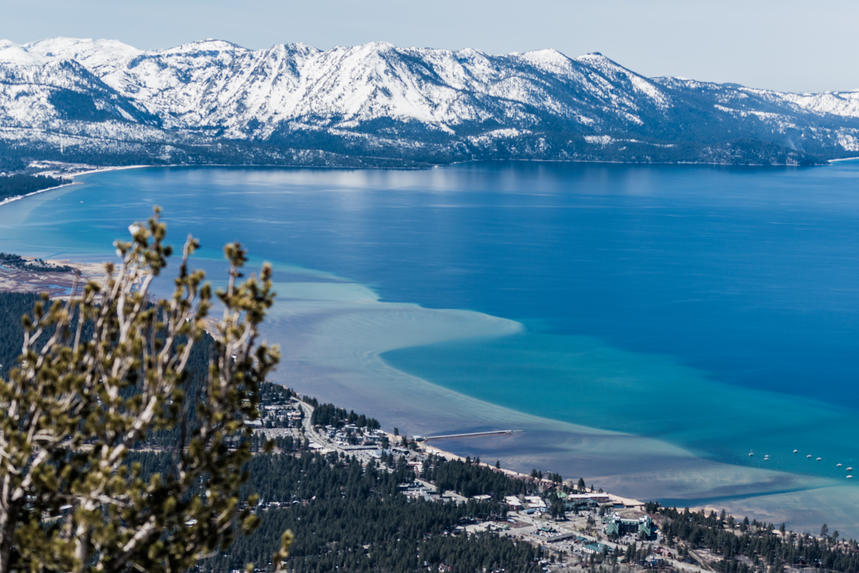
12. Nevada
- Outdoor recreation dependency index: 75.8
- Outdoor recreation share of GDP: 3.1%
- Outdoor recreation share of employment: 3.1%
- Outdoor recreation share of total compensation: 2.8%
- Largest economic impact activity: Boating & Fishing

11. Idaho
- Outdoor recreation dependency index: 78.6
- Outdoor recreation share of GDP: 3.0%
- Outdoor recreation share of employment: 3.4%
- Outdoor recreation share of total compensation: 2.9%
- Largest economic impact activity: RVing

10. Colorado
- Outdoor recreation dependency index: 81.2
- Outdoor recreation share of GDP: 3.1%
- Outdoor recreation share of employment: 3.8%
- Outdoor recreation share of total compensation: 2.9%
- Largest economic impact activity: Snow Activities

9. New Hampshire
- Outdoor recreation dependency index: 82.8
- Outdoor recreation share of GDP: 3.2%
- Outdoor recreation share of employment: 4.1%
- Outdoor recreation share of total compensation: 2.7%
- Largest economic impact activity: Snow Activities

8. Utah
- Outdoor recreation dependency index: 85.4
- Outdoor recreation share of GDP: 3.3%
- Outdoor recreation share of employment: 3.9%
- Outdoor recreation share of total compensation: 3.1%
- Largest economic impact activity: Snow Activities

7. Alaska
- Outdoor recreation dependency index: 89.8
- Outdoor recreation share of GDP: 3.9%
- Outdoor recreation share of employment: 4.5%
- Outdoor recreation share of total compensation: 3.6%
- Largest economic impact activity: Boating & Fishing
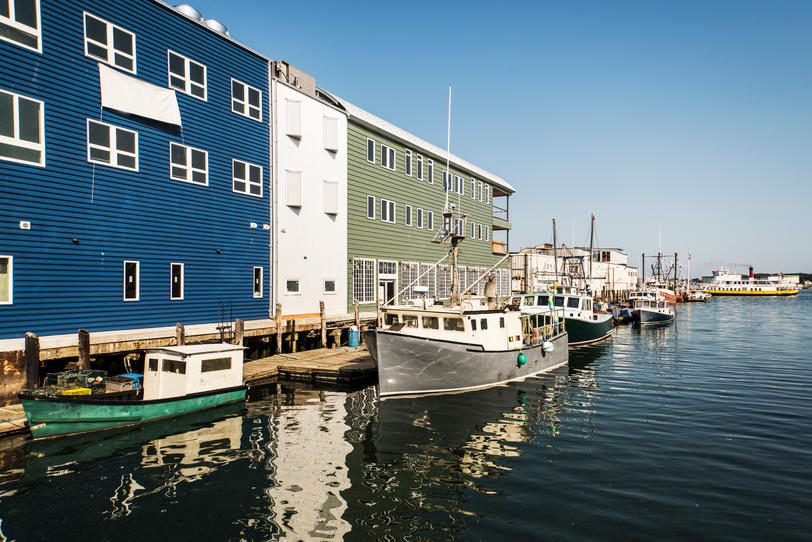
6. Maine
- Outdoor recreation dependency index: 91.2
- Outdoor recreation share of GDP: 4.2%
- Outdoor recreation share of employment: 4.7%
- Outdoor recreation share of total compensation: 3.4%
- Largest economic impact activity: Boating & Fishing
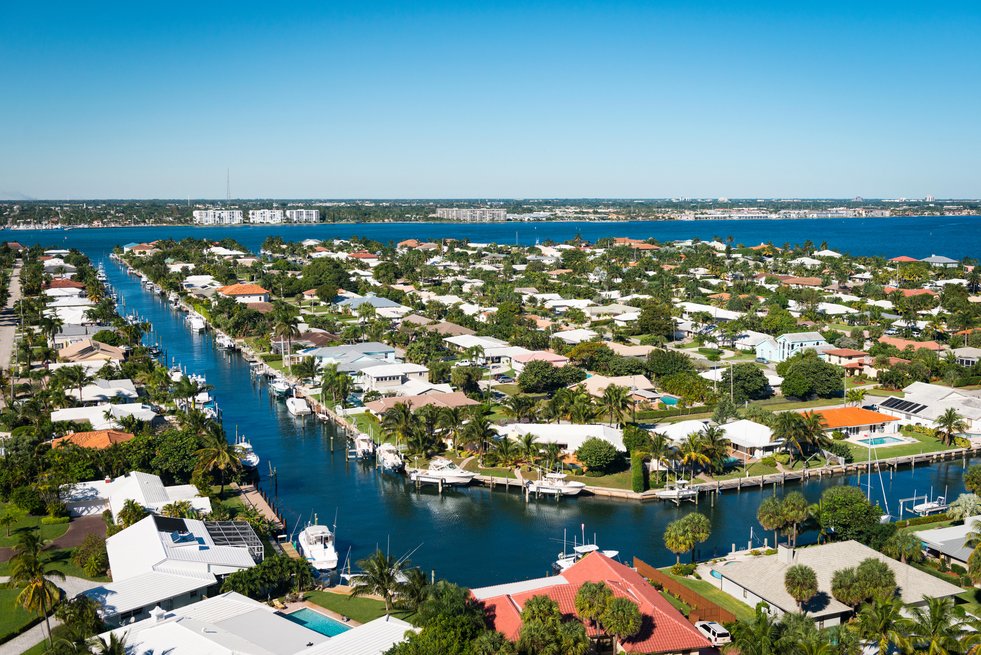
5. Florida
- Outdoor recreation dependency index: 91.6
- Outdoor recreation share of GDP: 4.4%
- Outdoor recreation share of employment: 4.0%
- Outdoor recreation share of total compensation: 3.9%
- Largest economic impact activity: Amusement & Water Parks
TRENDING
Tampa is a prime place to explore the great outdoors. Check out our guide to RV rentals in Tampa, and explore what this beautiful city has to offer.
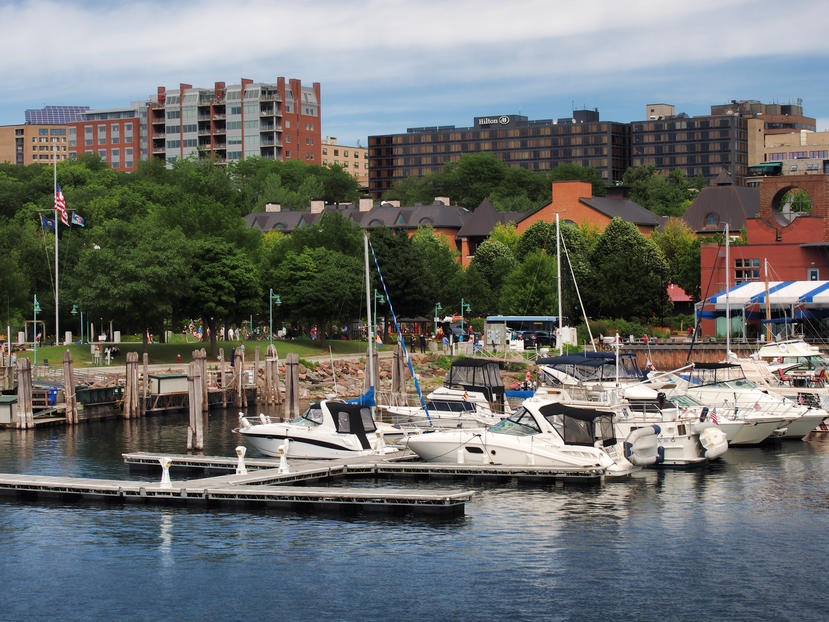
4. Vermont
- Outdoor recreation dependency index: 93.2
- Outdoor recreation share of GDP: 5.2%
- Outdoor recreation share of employment: 4.4%
- Outdoor recreation share of total compensation: 3.6%
- Largest economic impact activity: Snow Activities
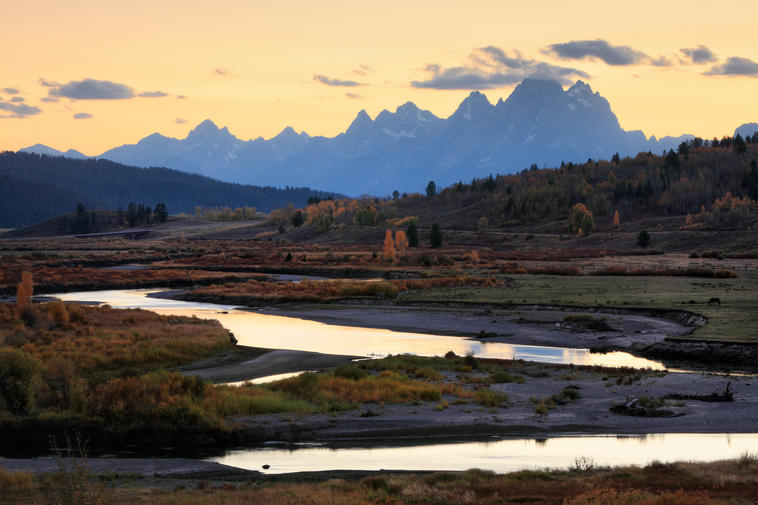
3. Wyoming
- Outdoor recreation dependency index: 94.2
- Outdoor recreation share of GDP: 4.2%
- Outdoor recreation share of employment: 5.2%
- Outdoor recreation share of total compensation: 4.1%
- Largest economic impact activity: Snow Activities
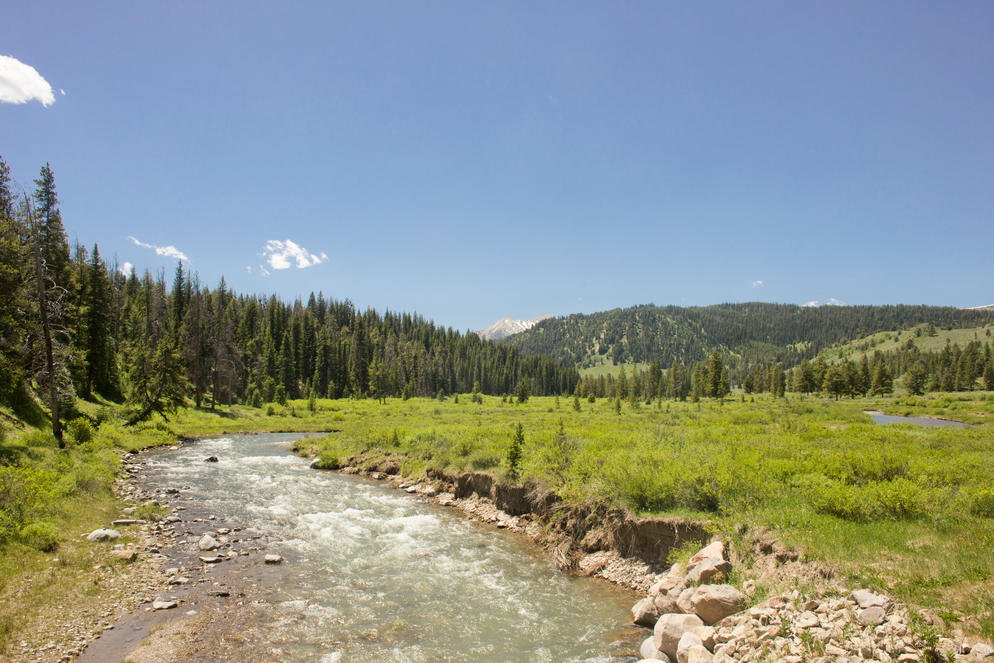
2. Montana
- Outdoor recreation dependency index: 94.8
- Outdoor recreation share of GDP: 4.7%
- Outdoor recreation share of employment: 4.5%
- Outdoor recreation share of total compensation: 4.1%
- Largest economic impact activity: Boating & Fishing
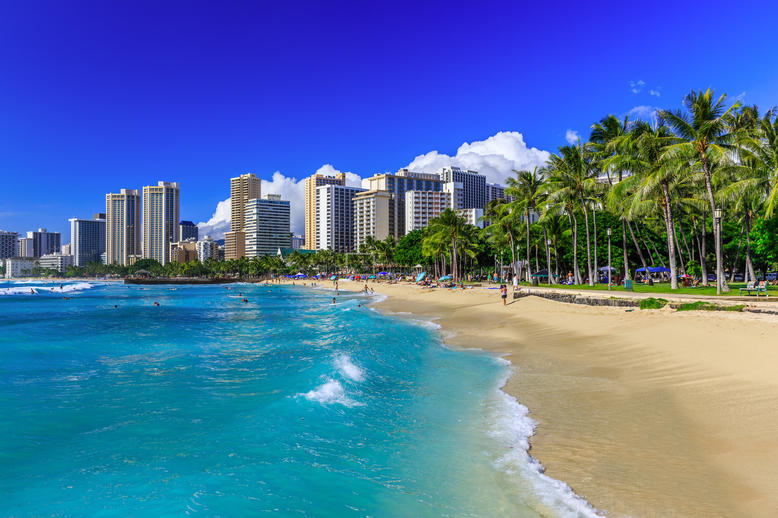
1. Hawaii
- Outdoor recreation dependency index: 100.0
- Outdoor recreation share of GDP: 5.8%
- Outdoor recreation share of employment: 5.9%
- Outdoor recreation share of total compensation: 5.3%
- Largest economic impact activity: Game Areas (including Golf & Tennis)
Methodology & Detailed Findings
The data used in this analysis is from the U.S. Bureau of Economic Analysis’s Outdoor Recreation Satellite Account (2019), the most recent data available. To determine the states most dependent on outdoor recreation, researchers created a composite index based on the following metrics:
- Outdoor recreation share of GDP: Total outdoor recreation value added as a percentage of total value added. Value added is the value of goods and services produced minus the value of goods and services used up in production.
- Outdoor recreation share of employment: Total outdoor recreation employment as a percentage of total employment (excludes self-employed workers).
- Outdoor recreation share of total compensation: Pay to outdoor recreation employees (including wages, salaries, and benefits) as a percentage of pay to all employees.
States were ranked by their composite index. In the event of a tie, the state with the larger outdoor recreation share of GDP was ranked higher.
!function(e,i,n,s){var t=”InfogramEmbeds”,d=e.getElementsByTagName(“script”)[0];if(window[t]&&window[t].initialized)window[t].process&&window[t].process();else if(!e.getElementById(n)){var o=e.createElement(“script”);o.async=1,o.id=n,o.src=”https://e.infogram.com/js/dist/embed-loader-min.js”,d.parentNode.insertBefore(o,d)}}(document,0,”infogram-async”);



